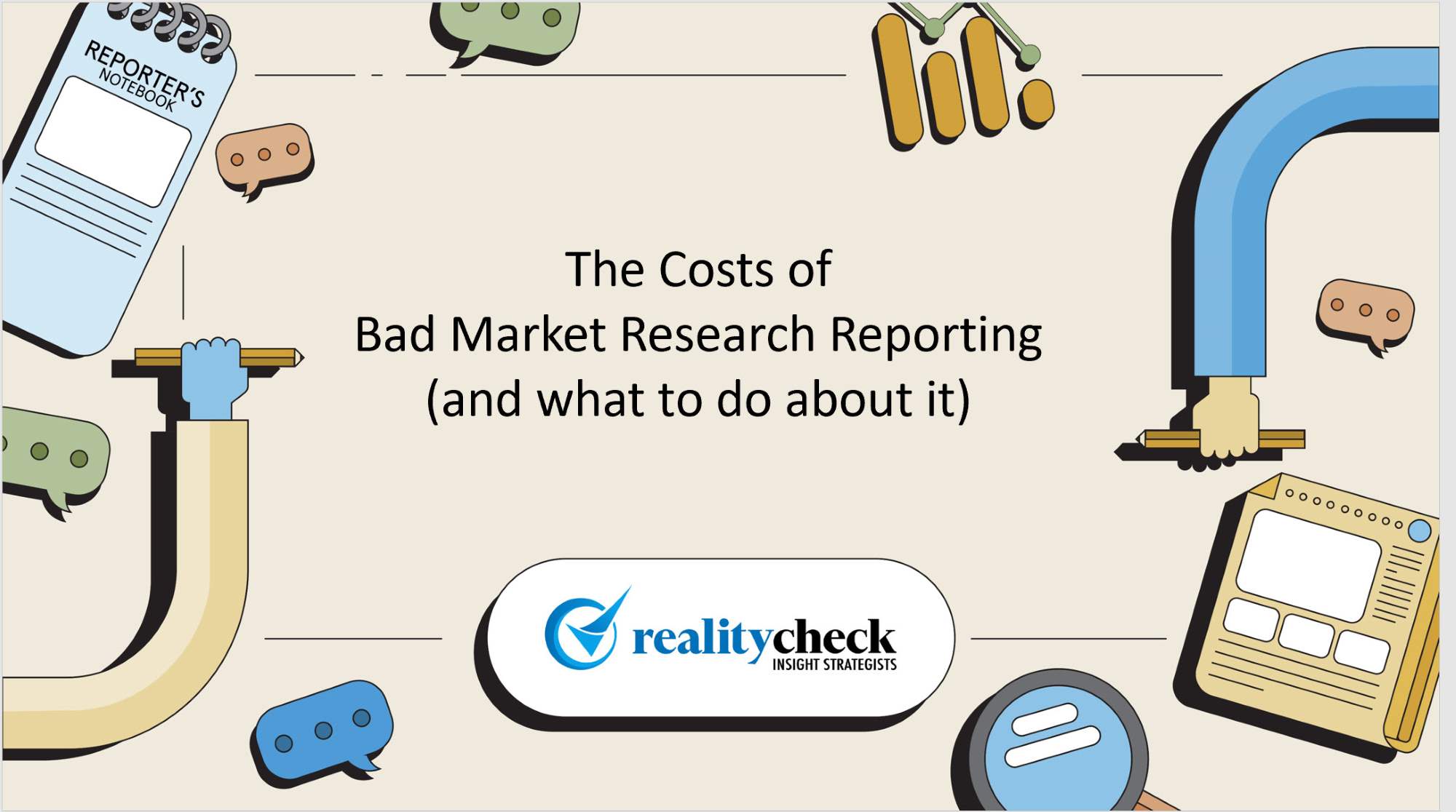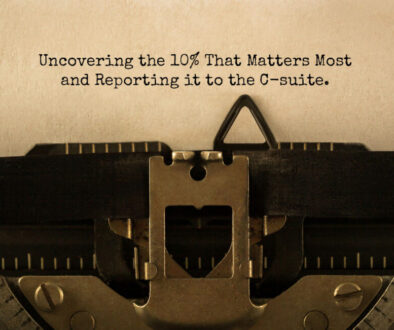The Costs of Bad Market Research Reporting (and what to do about it)
I logged onto the Teams meeting early. My client, Amanda, was already there and admitted me. As soon as I saw her face, I knew something was wrong.
“What’s up,” I said.
After a heavy sigh, she said, “I just opened a report from one of my research suppliers and it’s a bit of a mess.”
She read my look of panic and quickly added, “Oh no. It’s not one of yours!”
I was relieved but still concerned about her. I’ve known Amanda for a few years. She manages insights for a large portfolio of well-known CPG brands. In addition, she has a growing, young family. Her plate is full both personally and professionally.
So I said, “What now?”
“Well, I have to share this with the team tomorrow. There’s no time to send it back with comments and have the supplier redo it. So I guess I’ll have to stay late and rewrite it myself.”
The Bad Reporting Plague
Amanda’s story is not unusual. “Storytelling” is one of the most over-used buzzwords in market research today. But the industry remains plagued by poorly organized, badly written reports.
Bad reporting has serious implications, both human and organizational. Even the most brilliantly-designed and executed market research study will have little impact if the report doesn’t communicate new insights clearly and simply.
Here are three implications of bad reporting for corporate research buyers:
- Wasted time: Bad reporting causes market research buyers like Amanda to have to jump in and rewrite reports before they can share with internal teams. Or it causes rounds of back-and-forth between supplier and client to get the report where it needs to be.
But it doesn’t end there. Poorly written and organized reports have a time-wasting ripple effect. They make executive summaries harder to write. And they lead to lengthy and disjointed presentations.
- Limited actionability: Everyone wants research to be actionable. The reason why brands do market research in the first place is to initiate change. Market research is the first step to setting a new course for a brand’s positioning, messaging or product development.
But if new insights aren’t reported with simplicity and clarity, teams won’t act. The report ends up having little impact on the business because new insights that could inspire change are buried in a sea of slides, data tables and “old news.” The report is filed and forgotten, and, in some cases, after time has passed, the same questions come up again and the same study is repeated, wasting not just time but money.
- Lost confidence: Finally, bad reporting can erode the relationship between the consumer insights lead and internal teams. When bad reports are circulated, it not only reflects poorly on the research supplier, but also on the client insights manager or director who owns the project.
This is particularly true for internal team members who weren’t along for the ride of data collection, analysis and vendor share-outs – which is often the case with the most senior-level internal stakeholders. All these decision-makers see is the final report or an executive summary. If it’s bad, who gets the blame? You guessed it. The insights manager or director who delivered the mess.
Internal stakeholders lose confidence in the insights lead. And the insights lead loses confidence in the market research supplier.
How To Fix the Problem: Become an Insights Journalist.
I’m not going to lie. I’ve been dressed down a time or two in my 25-year insights career after delivering bad reports. In every instance, the client was right. I’ve learned from these experiences and, over the years, put in place a workflow that addresses many of the root causes of bad reporting.
Our workflow is rooted in how journalists work. That’s why we call it Insights Journalism®. (A credit to Allen Broome, Team Insights Leader at Edward Jones, for coming up with the Insights Journalism moniker when I described to him how we work at RealityCheck. As soon as he uttered the phrase, I called our IP lawyer and locked in the trademark. Thanks Allen!)
Good journalists are masters of non-fiction storytelling and they do a few things that insights storytellers should learn from.
- First, they put the most important, new information in the first paragraph. Unlike many market researchers, they don’t “bury the lead.”
- Second, they organize their stories around the “new news” that matters most to their audience. Too many research reports are organized around what was done rather than what was learned. Reporting in the order of the questionnaire or fieldwork is not storytelling. It’s data dumping.
- And finally, writing is essential to journalistic craft. Journalists write and rewrite. They are trained as writers; something market researchers are not, even though written communication is essential to our ability to make our work known to others!
Too often, market researchers “write” in PowerPoint or in summary form, stringing together slides or bullet points with no narrative flow. This is a recipe for disconnected thinking, disorganized flow and leaps of logic. The act of writing – in complete sentences, paragraphs and pages – forces narrative flow. Only through writing and rewriting (and rewriting again), can true storytelling happen. Journalists know how to do this. Market researchers should, too.
I’ll have more to say about the craft of writing, market research storytelling and Insights Journalism® in future articles. In the meantime, I’d love for you to join the conversation. Let me know what you think. Have you experienced the costs of bad market research reporting? How do you make sure your reports are clear, simple and compelling?
























